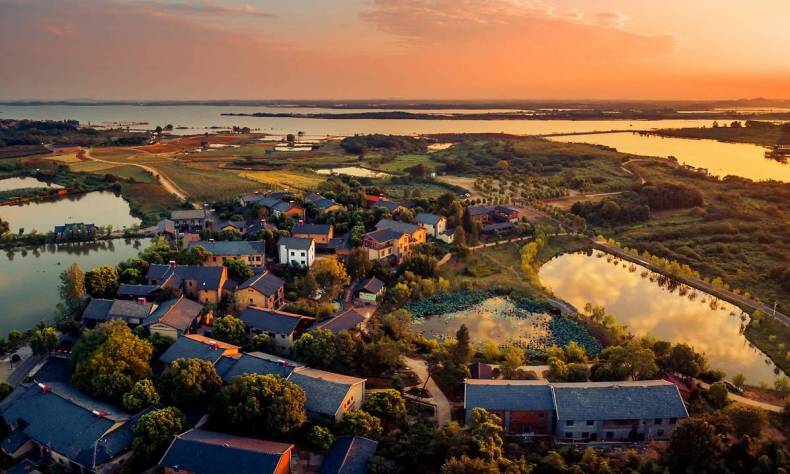
Why is China Emphasizing Rural Revitalization during the “Two Sessions”?
President Xi Jinping joins panel discussions with deputies from Guangdong and Shandong Provinces, during which Xi made an important speech on the issue of rural revitalization and urbanization.
President Xi Jinping recently joined two panel discussions with deputies from Guangdong and Shandong Provinces at the First Plenary Session of the 13th National Committee of the Chinese People’s Political Consultative Conference. During this discussion, Xi made an important speech on the issue of rural revitalization and urbanization.
Xi pointed out, in a key report to the 19th National Congress of the Communist Party of China, that the strategy of rural revitalization was a “historic task” – essential for accomplishing China’s modernization goals and building a moderately prosperous society.
Xi Jinping’s speech clarified the orientation of the rural revitalization strategy, explained the relationship between rural revitalization and urbanization, and pointed out the methods and tasks for implementing the strategy.
300 to 400 Million People Still Live in Rural Areas in the Future
The urban-rural balance will be a major issue in the future. It is estimated that when the urbanization rate in China reaches about 70%, the urban population will be about 1 billion and the rural population about 430 million; when the urbanization rate reaches about 75%, the urban population will be about 1.1 billion and the rural population about 360 million. Combined with international experience, if everything goes as planned, the former goal will be achieved in around 2030-2035. This period coincides with the Nineteenth National Congress target for basic modernization.
Firstly, urbanization is a challenge. At the end of 2017, the urbanization rate in China was 58%, and the permanent population in urban areas was about 813 million, including more than 200 million households from rural areas who had lived or worked in cities or towns for more than six months. This means that the rural population in China still remains 570 million. There is still a long way to the vision envisaged by the General Secretary – three to four hundred million people living in rural areas”.
Secondly, it is important to deal with the relationship between high-level urbanization and rural revitalization. In order to realize full rural revitalization, several conditions must be met: the rural population must be substantially reduced, and the income of agricultural employees must reach the average level of the city; productivity must rise, and the share of gross agricultural production in GDP must fall significantly; social governance and financial policy must be integrated across all urban and rural public services. Without high-quality urbanization, it is impossible to develop rural areas to a high level; without rural revitalization, it is also impossible to promote urbanization properly. This is the relationship between urban and rural areas.
Currently, the imperfections in the land system, zoning system, and population policies have caused resource mismatches and have affected the process of urbanization. The level of urbanization will determine the success of China’s future development.
Urbanization and Anti-Urbanization Should both be Promoted
Anti-urbanization is a special phenomenon that occurs in the process of urbanization, and it is also inevitable. Generally, we regard the non-agricultural population living in or near rural areas as an anti-urbanized population.
A certain scale of anti-urbanized population has a special role in promoting rural revitalization.
Firstly, the anti-urbanized population can promote the development of rural industries. Looking at international experience, we can find that although most anti-urban populations do not engage in agriculture, they are closely related to the agricultural industry chain.
These people usually have advantages in capital and technology, and can drive most farmers into the modern economic system of division of labor, thereby they can enhance the overall competitiveness of the agricultural industry.
Xi said that to let talent perform on the stage of the countryside and peasant entrepreneurs grow in rural areas is important,which is good for the development of industry.
Secondly, the anti-urbanization population can speed up the improvement of rural governance. The anti-urbanization population enjoys good economic conditions and has a knowledge base, which can gather corresponding human resources, and their participation can accelerate the process of agricultural modernization.
In addition, the implementation of the rural rejuvenation strategy is a big task. It is necessary to make overall plans and push ahead scientifically.
In the panel discussion with Shandong deputies, the Xi Jinping clarified the rural rejuvenation strategy. He explained the “Five Promotions” – vitalization of industry, talent, culture, ecology and organization. He concluded by emphasizing that stressed that the rural vitalization strategy should be carried out step by step, the whole of society must leap into action with concerted efforts and targeted measures. We should scientifically grasp differences and characteristics in different regions, paying attention to regional features to reflect the local customs. We should resolutely not engage in “one-size-fits-all”, not imposing a unified model and “vanity projects” should be completely eradicated.
The rural revitalization strategy was first proposed at the 19th National Congress of the Communist Party of China. During the subsequent Central Rural Work Conference, the strategy was treated as the central task relating to agriculture, rural areas and rural people under Socialism with Chinese characteristics for the new era. China released a package of policies under the No.1 central document of the year, charting the roadmap for rural revitalization.
When delivering the government work report for 2018, Premier Li Keqiang made proposals concerning the major tasks for implementing the rural revitalization strategy, including scientific planning, promotion of rural supply-side reform, deeper comprehensive rural reform, and all-round development in rural areas. This forms a blueprint for us to accelerate the process of rural rejuvenation.
Chen Ming, Assistant Researcher, Institute of Political Science, Chinese Academy of Social Sciences.
Opinion articles reflect the views of their authors, not necessarily those of China Focus
Editor: Cai Hairuo
 Facebook
Facebook
 Twitter
Twitter
 Linkedin
Linkedin
 Google +
Google +










